

 |
 |
| Home
Environmental Microbiology Thiobacillus Sludge ISO 14000 Miscellaneus Glossary Links About the author Guestbook - View - Sign Exit website |
 It could be logical to consider Environmental microbiology as a branch of Microbiology, but I believe it is too restrictive and limited. So I prefer to consider as an area of interaction between these two science disciplines that studies the interaction of microorganisms with the environment. If you have any correction or suggestion to do, please send me a message. |
||||
| Historic Contextualization of Environmental Microbiology |
To understand the situation and trends in Environmental Microbiology, is important to know the people and events that took place. In this retrospective I will mention some important persons that were not microbiologists, but colaborated to give the basis of all science branches. Click here to know more about it.
|
||||
| Beginning and the Golden Age |
The "Golden Age" of Microbiology, from about 1850-1920. During this period, research established that certain microorganisms could cause disease in humans, animals, and plants. It also became clear that microorganisms can cause chemical changes in their environment, including soil and water. By the time this period was over, microbiology had become established as a scientific discipline having its own identity.
|
||||
| Twentieth Century Microbiology |
After the "Golden Age" accomplishments, the work that was begun by the people described above was built upon. Immunology and virology became major areas of study, as did infectious diseases and environmental microbiology (microbial ecology). In addition, microbial genetics and molecular biology became major areas of study as new methods were developed to study the structure and activity of nucleic acids, proteins, and other molecules. Some significant figures in 20th Century microbiology are profiled below.
|
||||
| A new Paradigm | The question is: | ||||
Historic Contextualization of Environmental Microbiology
| The Basis of all Sciences |
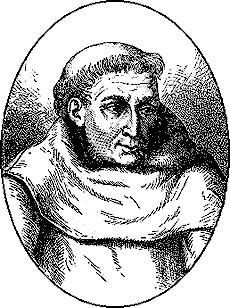 |
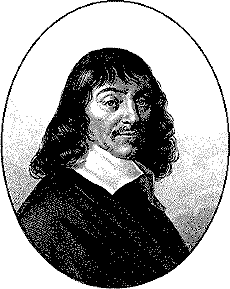 |
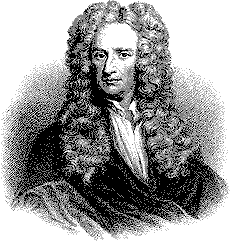 |
||
|
Francis Bacon
1561 - 1626 |
René Descartes
1596 - 1650 |
Isaac Newton
642–1727 |
|||
|
- |
Francis Bacon, René Descartes and Isaac Newton were not microbiologists, but influenced all science branches by establishing the basis of scientific method of investigation. Bacon and Descartes ideas were very different in many aspects, but Newton unified them by introducing an appropriate combination, using mathematic and physics as the only way to describe our world. According to them the universe was like a perfect machine, and to understand it It was necessary to decompose it in parts (atomistic and mechanicist). The scientists main goal were to extract from nature, under torture, all its secrets. They believed that the universe is fixed, without any significant changes since its creation.
|
||||
|
Evolution ? |
Charles Robert Darwin, 1809 - 1882 When Darwin published "Origin of Species" (1859), he introduced a fundamental change in all sciences. The universe is in constant evolution. It was the begining of questioning the Cartesian vision of the world as a great and perfect machine created by God's hands.
|
||||
| Beginning of Microbiology | In 1872, Fernand J. Cohn founds the science of bacteriology, and in 1875 published an early classification of bacteria, using the name, Bacillus , for the first time. | ||||
| Microbiology and diseases - "The Golden Age of Microbiology" |
 |
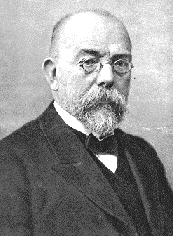 |
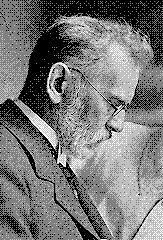 |
||
|
Louis Pasteur |
Robert Koch
|
Paul Ehrlich
|
|||
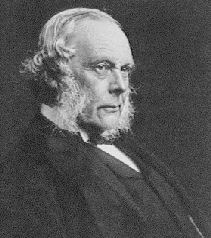 |
 |
||||
|
Joseph Lister
|
Ilya Metchnikoff
|
||||
|
Important discoveries and achievements relating microorganisms with human diseases were made by persons like Robert Koch, Louis Pasteur, Joseph Lister, Ilya Metchnikoff and Paul Ehrlich. They established the basis of Microbiology Science, intimately related with health science.
|
|||||
| The Beninning of Environmental
Microbiology
|
Martinus Beijerinck In 1888 Martinus Beijerinck initiated a new approach toward microorganisms. He used enrichment culture minus nitrogenous compounds to obtain a pure culture of the root nodule bacterium Rhizobium demonstrating that enrichment culture creates the conditions for optimal growth of a desired bacterium, but most important, he studied a microrganism withouth being related with humans, but plants, starting the Environmental Microbiology. In the next year (1889) Sergei Winogradsky studid Beggiatoa bacteria and determines that it can use inorganic H2S as an energy source and CO2 as a carbon source. He establishes the concept of autotrophy and its relationship to natural cycles. Angus Smith in 1882 initiates some preliminary research in "blowing air" into sewage tanks to avoid undesirable, malodorous anaerobic results. |
||||
Twentieth Century Microbiology
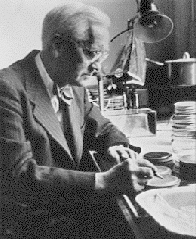 |
 |
||||
|
Alexander Fleming
|
|||||
|
|
David Bergey et al. in the early's 1900 published the first edition of Bergey's Manual of Determinative Bacteriology an important reference that is constantly revised to identifying bacterial species until today. Ardern and Lockett (1914 Salford, England) Using fill-and-draw cycling had provided the premier demonstration and pronouncement of activated sludge treatment Frederick Twort in 1915 discovered the bacteriophage, and . Two years later, Felix d'Herrelle independently describes bacterial viruses and coins the name "bacteriophage." Frederick Griffith in 1928 discovers transformation in bacteria and establishes the foundation of molecular genetics. He shows that infecting mice with a mixture of live, avirulent, rough Streptococcus pneumoniae Type I and heat-killed, virulent smooth S. pneumoniae Type II leads to death of the mice. Live, virulent, smooth S. pneumoniae Type II are isolated from the dead mice. Alexander Fleming (1929) discovered the penicillin, effectively launching the "Antibiotics Era," a major revolution in public health and medicine. Selman Waksman -(born 1888) began a systematic screening program for antimicrobial compounds produced by soil microorganisms. From several antibiotics discovered and characterized, streptomycin was the one proved to be one of the only antibiotics that could be used to successfully treat tuberculosis. Waksman's work showed that many actinomycetes (and especially members of the genus Streptomyces) were antibiotic producers, and that many but not all of these compounds could be used in clinical medicine. Waksman also coined and defined the word "antibiotic". Joshua Lederberg et al in a series of papers starting in 1946 publish the first paper on conjugation in bacteria, and the transfer of genetic information by viruses. Francis Crick and Maurice Wilkins, together with James Watson (1953), describe the double-helix structure of DNA. This achievement made possible to initiate a new understanding of molecular genetics of microorganisms. The next major steps in our century in microbiology are all related with new findings and methodologies that amplify the knowledge of bacterial genes. |
||||